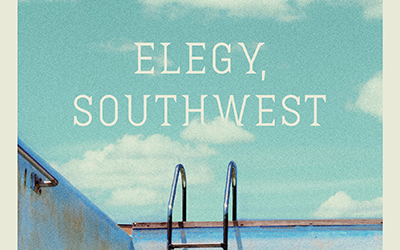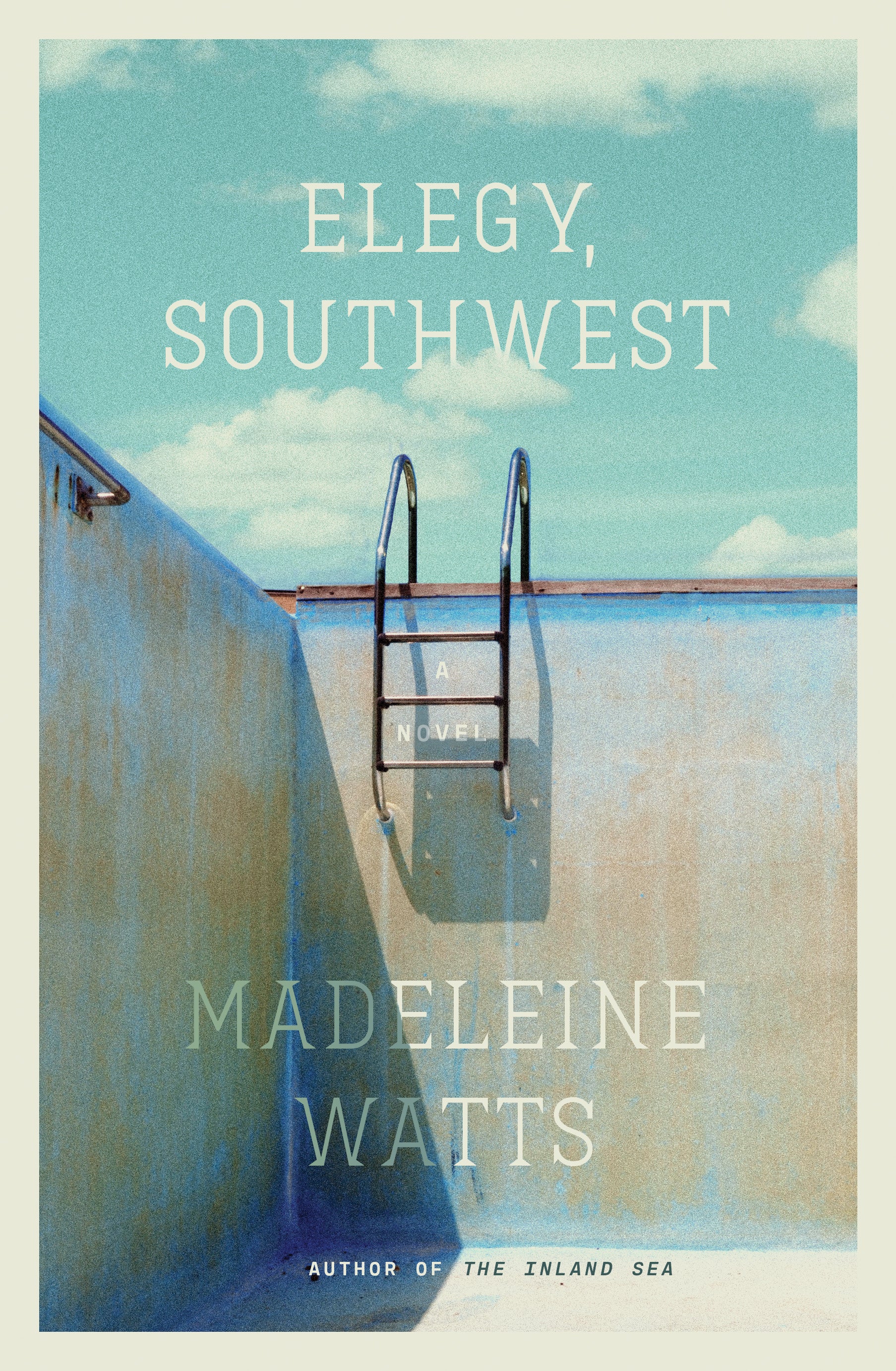
- Free Article: No
- Contents Category: Fiction
- Review Article: Yes
- Article Title: Drowning in grief
- Article Subtitle: A tastefully minimal road-trip novel
- Online Only: No
- Custom Highlight Text:
The themes in Elegy, Southwest are big, nothing less than life and death. Madeleine Watts sets them against a backdrop of monumental scale: the endless desert vistas of the American south-west, the overwhelming monolith of the Hoover Dam, the massive grandeur of the Grand Canyon. The narrative Watts has crafted to explore these big themes rejects anything epic and instead goes small-scale, bringing an almost microscopic lens to the emotional world of a marriage coming apart.
- Featured Image (400px * 250px):

- Alt Tag (Featured Image): Kirsten Tranter reviews ‘Elegy, Southwest: A novel’ by Madeleine Watts
- Book 1 Title: Elegy, Southwest
- Book 1 Subtitle: A novel
- Book 1 Biblio: Ultimo Press, $34.99 pb, 276 pp
- Book 1 Cover Small (400 x 600):

- Book 1 Cover (800 x 1200):

- Book 1 Readings Link: https://www.readings.com.au/product/9781761153136/elegy-southwest--madeleine-watts--2025--9781761153136#rac:jokjjzr6ly9m
Echoing the author’s own trajectory Eloise is an Australian graduate student in America. Her dissertation research about the problematic relationship between modernity and water inspires a road trip through Nevada, Arizona, and Utah with her husband, Lewis, tracing the path of the dying Colorado River while their marriage falters. The damming of the Colorado, a colossal engineering feat completed in 1937, becomes a symbol of all the demented excess of American greed and disregard for the natural world.
Eloise narrates the novel as an address to Lewis, a self-absorbed artist who works for an organisation that funds land art projects of epic scale, great conceptual obscurity, and dubious worth. Second-person narrative voice is hard to pull off. It can feel overly mannered, but Watts handles it with ease and makes it seem purposeful, intimate. She adores Lewis, for reasons that remain elusive. His art practice consists of handing Eloise his phone and commanding her to film him dancing at various whimsical locations, and disappearing into restaurant bathrooms for a long time to film himself dancing. Maybe he’s a great dancer. It’s unclear.
What is clear is that he is drowning in grief after the death of his mother from cancer, and that Eloise is crushed by his emotional withdrawal. On this road trip through the south-west, including a visit to his hated hometown of Phoenix, Arizona, Eloise wants to resuscitate their relationship, to save him and their marriage, but in the world of this novel there are no easily available scripts for saving anyone or anything. The title gives it away.
Eloise’s spare, lyrical descriptions evoke the awesome power of the desert landscape, the giant, crushing skies and flat, eternal expanses. She also has an eye for the perverse aesthetics of industrial decay, and this is where her unique point of view finds objects of real interest. Inspired by the ‘faint brown scum’ floating on the dying Lake Powell, she rhapsodises, ‘Oh, it’s so beautiful and so ruined.’
Literary minimalism seems like a deliberate counterbalance to the enormity of the themes and setting, a device to render the unthinkable manageable. The road-trip plot eschews melodrama and showdowns, adopting instead an approach of careful understatement and emotional restraint. At times I found myself wishing for more drama, a proper fight to clear the air, a climactic moment, a crash or a bear attack, a Thelma and Louise moment. These are all signposted and then rigidly avoided with a stringent sense of literary self-consciousness. The narrator comes across a gun in a drawer, but this is a story that refuses to obey Chekov’s dictum. Signs at the entrance to hiking routes warn of bears but no bears pursue these characters. There is always smoke on the horizon, smoke in the air, even flames by the side of the road, but no big cleansing fire. Things fall apart in slow motion, one piece at a time. Like the narrator’s husband who wants to avoid the distasteful glaring kitsch of a Route 66 tourist diner, Watts keeps things tastefully minimal.
This comes across as more than avoidance or an empty aesthetic commitment to taste. There is a mistrust of grandiosity baked into the narrative, from a critique of the aesthetics of large-scale land art to the hubris of projects such as the hydro-electric dams that wreck ecosystems dependent on the rivers they dominate and that fail to meet the insatiable water demands of cities and agriculture.
Watts contends with one of the aesthetic challenges that comes with writing about the natural world in a time of climate crisis: the unfolding apocalypse feels weirdly anti-climactic. The end of the world as we know it is definitely coming, one feels, reading this novel, whose narrator is so obsessed with signs of impending doom that her frustrated husband sighs and remarks, ‘Sometimes I think you get excited about catastrophes. Like you’re excited about the idea of everything falling apart.’ And yet the shape of that disaster is always in flux. At times it is horrifyingly close and immediate, a wildfire that pollutes the sky and destroys cities, forests, towns. Then the fires burn themselves out. Hurricanes pass, floods recede. Mundane life goes on.
Watts conveys the peculiar sense of uncanny that comes with being an Australian in parts of the American west, where eucalypts and bottlebrush trees are so endemic that people like Eloise’s husband believe they are native to the United States. ‘I felt like I was home,’ she says, surrounded by gum trees in Arizona, after spending time in the alien landscape of New York. It is an illusion, of course, overlaying a profound cultural disconnect that can be doubly disorienting when it surfaces. ‘I felt so foreign, all of a sudden,’ she says later. ‘So absolutely not at home.’ In this familiar-yet-strange world, she has built a sense of belonging in her marriage, and the novel charts the awful disintegration that attends the breakdown of that relationship.
There are images of regeneration here – the landscape renews itself after fire – but humans who expect to live forever through technology are mocked. The awareness of mortality haunts the characters. ‘We are all trapped by death,’ Eloise acknowledges, ‘knowing an end is coming, if not for the world, then at least for us. For the “I”,’ What is a writer to do in these circumstances; what is a person to do? Elegy is a form that has provided an answer – to commemorate life, through art. If the ‘I’ is over, Eloise understands, there is, despite everything, still life and hope in relationships and in continuing to speak through the voice of ‘you’.


Comments powered by CComment